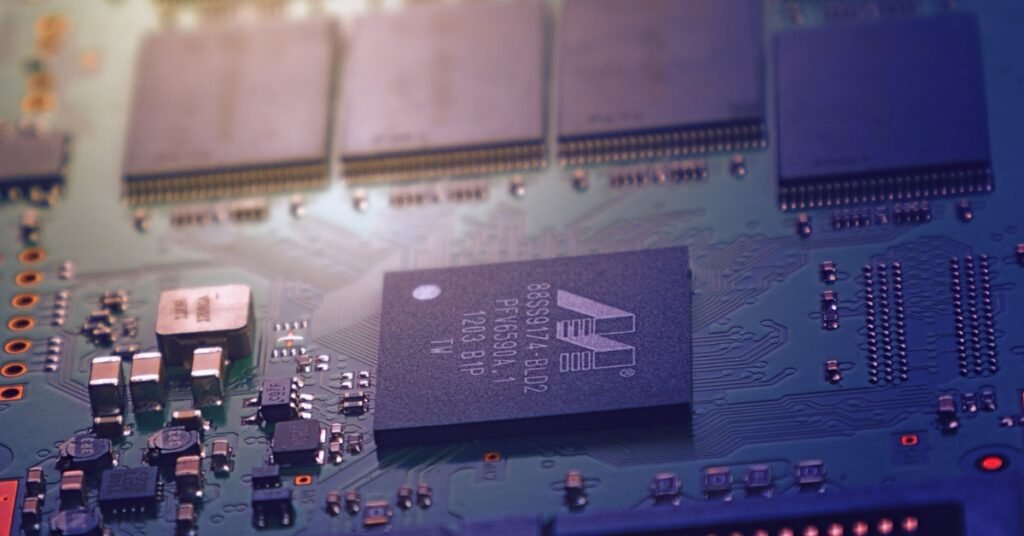New AMD AGESA Firmware boosts Ryzen 7000 memory speeds up to 8,000 MT/s! Exciting update for blazing-fast performance!
Table of Contents
AMD has generated Exciting news as they release a new AGESA version for their Ryzen 7000 processors, which brings a remarkable improvement in the maximum memory clock for DDR5 modules.
This updated AGESA firmware, version 1.0.0.7b, allows Zen 4 systems to achieve memory speeds of up to 8,000 MT/s.
Some users have reported higher speeds, marking a notable advancement in memory performance.
Buildzoid’s Discovery
The news about the increased memory speeds was first brought to light by Buildzoid, a well-known hardware enthusiast and overclocker with an active presence on YouTube.
In the past, it was generally accepted that Zen 4 systems could achieve speeds of around 6,000 MT/s, with occasional peaks of up to 6,400 MT/s if you were lucky.
However, with the new AGESA firmware, adventurous users have pushed their systems to 8,000 MT/s, and some have even reported stable operation at 8,200 MT/s, as mentioned by Chi11edog on Twitter.
Considerations and Compatibility
While the ability to reach 8,000 MT/s is impressive, it is important to note that only some systems will immediately achieve this speed by simply updating the BIOS.
The success of such high speeds depends on various factors, including the motherboard and the memory configuration used.
For instance, using four RAM modules in Dual-channel mode might make it more challenging to achieve such high speeds.
Buildzoid, however, claims to have achieved the overclocking feat using a relatively simple and affordable eight-layer, daisy-chained motherboard that costs less than $300.
Additionally, with the new firmware, achieving speeds of 7,200 MT/s should be more attainable for most users and situations.
Understanding “Gear 2” and Performance Implications
With memory clock speeds surpassing 3,000 MHz (6,000 MT/s) on Zen 4 systems, the memory switches to what is known as “Gear 2.”
This mode, referred to as “uclk div1” by AMD, means that the integrated memory controller (uclk) operates at half the speed of the memory itself (memclk).
Robert Hallock, an AMD representative, has already mentioned on Twitter (Bionic_Squash) that Zen 4 systems perform optimally when the ratio is set to a neat 1:1, with the Infinity Fabric clock (fclk) set to ‘Auto’ at 1,733 MHz.
It is important to note that the increase in performance may not be linear with the increase in memory frequency.
The actual impact on benchmarks and real-world usage remains a question that users should consider before attempting extreme overclocking.
iGPU Performance and Memory Speeds
One of the significant beneficiaries of the increased memory speeds is the integrated video processor (iGPU) present in almost all Ryzen 7000 series CPUs.
The performance of the iGPU has a strong and direct correlation with memory speed.
The iGPU utilizes system memory as VRAM, and the faster the memory runs, the higher the memory bandwidth, allowing for improved performance with powerful RDNA 2 or RDNA 3 iGPUs.
In conclusion, AMD’s latest AGESA firmware update for Zen 4 processors is a game-changer for memory performance, enabling users to achieve memory speeds of up to 8,000 MT/s and potentially even higher.
However, users should be aware of the compatibility considerations and the potential impacts on overall system performance.
With the iGPU benefiting from faster memory speeds, this update opens up new possibilities for integrated graphics performance in Ryzen 7000 series CPUs.
Get our best stuff sent straight to you! Join our WhatsApp Channel.




